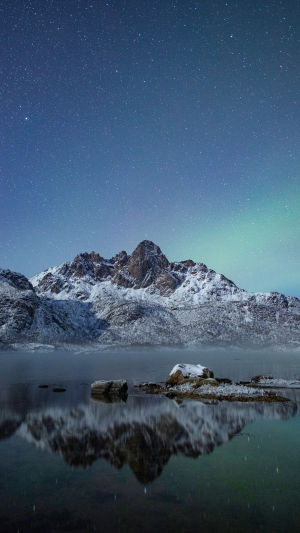Alaska, the 49th state of the United States, is not widely recognized for its urban development. Instead, it is renowned for its Alaskan sled dogs and the annual ice sled races that take place there.
This region is characterized by a distinct and cold climate. In fact, the average annual temperature in Alaska is a mere 15 degrees or even lower, resulting in a stunning landscape of windswept snow and ice.
Among the remarkable natural wonders found here is the Snowy Mystic, which has been designated as one of the world's seven natural landscapes. It encompasses vast glacial formations and serves as a geological forest park in the United States.
One prominent tourist attraction in Alaska is the Glacier Bay National Geopark. Encompassing a vast area, this geological forest park features 12 glacial features and nearly 20 rivers, making it one of the premier glacier destinations worldwide.
Due to variations in ambient temperature and the reflective nature of the glaciers, the hues observed in Glacier Bay Park change throughout the year. As the glaciers face increasing pressure, they continue to melt, leading to significant shifts in the total number and area of ice along the riverbanks.
For instance, during colder temperatures, the entire expanse of ice reflects a magnificent dark blue scenery, resembling glistening crystals when viewed from above. As the temperature drops and the ice cracks, the river becomes filled with debris, resulting in a dark gray reflective surface. This transformation creates a truly captivating natural spectacle.
Beyond the glaciers, Glacier Bay National Park boasts expansive forests and rock formations formed by geological changes. Although these rock outcrops may not possess significant volume or distinctive appearances, they hold immense practical value for ecological research due to the geological transformations that have occurred over the years.
Another sight that captures the interest of many visitors to the park is the possibility of encountering dolphins within the glacial region. Spotting these magnificent creatures amidst such pristine natural surroundings is indeed a fortunate experience.
It is also worth noting that traces of human existence are not absent in Glacier Bay, with small villages and their inhabitants scattered across the vast land area. For those who wish to extend their stay, these villages offer accommodations and the opportunity to engage in outdoor group activities by setting up tents.
British explorer Vancouver first arrived in Glacier Bay in 1979. At that time, the park was not as expansive as it is today, with immense walls of glaciers dominating the landscape. Over the span of 40 years, Glacier Bay has grown in size and prominence, albeit enduring the challenges posed by global warming and human activities.
Nevertheless, Glacier Bay remains a world-famous destination.
Alaska remains covered in snow for over half of the year, with temperatures consistently below freezing. Travel options are limited, with cruise ships, airplanes, and highways being the primary means of transportation.
Visitors can explore the only ice palace in the world that remains open year-round, experience the renowned Arctic Village with its hot springs amidst freezing weather, and witness the diverse array of polar wildlife that call this region their home.
Alaska's unique climate, breathtaking natural landscapes, and the allure of Glacier Bay make it a captivating destination for adventurers seeking to immerse themselves in the wonders of this northern state.
Whether it's witnessing the majestic glaciers, exploring the forests and rock formations, or encountering wildlife in its natural habitat, Alaska offers an unforgettable experience that leaves a lasting impression on all who venture there.





